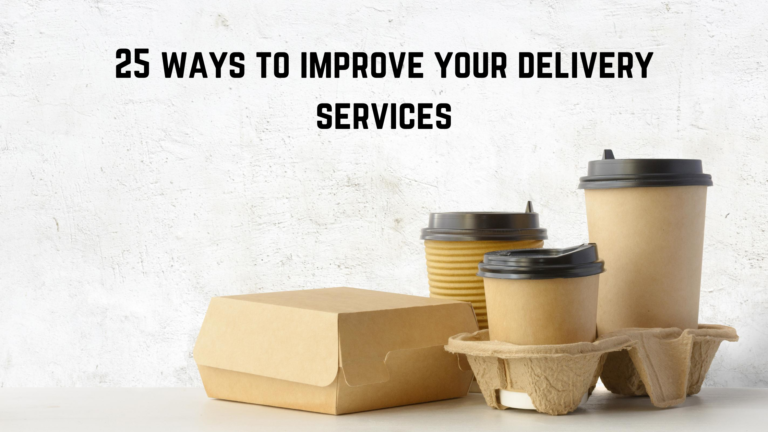There is certainly no doubt that the restaurant business incurs huge costs. The costs of management, rental property, food costs, high commissions, and other overheads, etc. are eating away the profits. The restaurant industry was booming before this pandemic. Now, restaurant owners are trying their best to be cost-effective to survive in the industry.
Apparently, with the advancement of technology and facilitating online ordering services, cloud kitchens seem like the only logical thing to do to manage high rentals and reduced margins.
Have you ever come across a restaurant named “FAASOS”?
If not, please do. You will be thrilled to read the exciting journey of Faasos.
Just to brief, it is not any other restaurant. Faasos is the largest cloud kitchen company in India. It operates at 150 locations in 20 cities of India. The numbers and profits are increasing since 2017.
And the most fascinating thing is to understand – “How cloud kitchens are helping Faasos to survive the food tech bloodbath”
So, let’s get into what Cloud Kitchen is all about!
What is Cloud Kitchen?
A cloud kitchen is specifically an exclusive restaurant. It provides only delivery services with no reliance on dine-in services. Cloud kitchens are also known as ‘ghost kitchens’ or ‘virtual kitchens’ due to no direct contact with customers.
This may come off as an old concept but clearly, it is never out of trend. Cloud kitchens have a special delivery-only model with various advantages over traditional restaurants.
It is a great alternative if you do not want to lose your profits due to recurring restaurant costs.
Working of a Cloud Kitchen
As mentioned earlier, Cloud kitchens provide only delivery services. These restaurants have no face-to-face interaction with their customers. Cloud kitchens rely fully on delivery or Online Ordering Systems.
Cloud kitchens do not have to incur any extra restaurant management costs. The owner may rent a space and run one or multiple cloud kitchens under various names, in just one space. Thus, offering multiple cuisines and facilities to customers.
When it comes to cloud kitchens, the latest restaurant technologies play a major part. Firstly, cloud kitchens rely upon an in-house online ordering system or third-party systems. These systems are very crucial for any cloud kitchen to survive in the present times.
Other than this, they also require additional branding on technical platforms, digital payment services, collecting customer data, and customizing the dishes according to it.
An in-house ordering system can largely help cloud kitchens in increasing their profits due to no commission charges and many other benefits.
Business Models in Cloud Kitchen
Knowing business models are important if you’re planning to open a cloud kitchen or wanting to turn your restaurant into one.
Independent Cloud Kitchen Model
This cloud kitchen model is the most popular and simplest one. In this, cloud kitchen owners offer only delivery services. There is no seating space or pick-up/takeaway services in the kitchens for the customers.
Oven Story – a pizza delivery restaurant is an example of this.
Features:
- Only Kitchen
- Cuisine specialization
- Only delivery
- Orders are taken online
Benefit: Saves additional costs of restaurant management
Limitation: Extra costs for marketing and branding to promote the cloud kitchen
The Rebel Foods Business Model
In this type of cloud kitchen, the kitchen is multi-cuisine. The kitchen owners also find the most popular dishes in an area and prepare the menu accordingly. Also, the chefs prepare all the cuisines in a shared space.
It only has an online ordering service with no pick-up/takeaway option.
Faasos follows the Rebel Foods Business Model.
Features:
- Multiple brands run in one kitchen
- Every brand is specialized in cuisine
- Delivery only
- Orders are taken online
Benefits: Serves various cuisine for an increased customer base
Limitations: Additional costs for ingredients and marketing
The Freshmenu Business Model
This type of business model allows the cloud kitchen owners to have interaction with their customers.
Along with an online ordering system, they also have a storefront. This storefront allows customers to see how their food is prepared and also collect the parcel or takeaway.
The famous Freshmenu Cloud Kitchen follows this type of business model.
Features:
- Single Kitchen
- Single Brand
- Menu dependent on the season and bestsellers
- It has a storefront
- Orders are taken online
Benefits: Allows communication with customers
Limitations: Difficulty in promoting the cloud kitchen
These three are the main types of cloud kitchen business models in the restaurant industry. There are three others also that include –
- Swiggy Access Business Model
- Zomato Infrastructure Services Business Model
- Kitopi Business Model.
These models are largely dependent on the respective online ordering service.
Benefits of Cloud Kitchen
There are various benefits of owning a cloud kitchen like:
- Reduced overhead costs
- Increased efficiency
- Increased profit margin
- Access to customer data and their preferences
- Free branding through the online ordering system
- Easy expansion of cloud kitchen
Limitations of Cloud Kitchen
Cloud kitchens face certain kinds of limitations. However, with the right resources and tricks, they are easy to overcome.
- Dependency on third-party apps like Zomato and Swiggy
- Tough competition from traditional and established restaurants
- Commission rates for online ordering services
- No customer relations or customer data through third-party services
In-house ordering facility: The best solution for all the problems
The best way to overcome all the above limitations is by having your own online ordering service.
An in-house online ordering system has an integrated POS software that reduces the dependency on third party services.
You will not have to pay any commissions. You can customize, change, or arrange your menu in the way you want. You can also design your website as you will. The best advantage is that you can keep all your customers’ data for building customer relations and loyalty.
Grubly can assist you in building your cloud kitchen’s website and also provide you with additional benefits.
Conclusion
Virtual kitchens and cloud kitchens are an increasing trend. They’re also a cost-effective and safe alternative in the times of COVID-19 due to being contactless. So, if you’re thinking of venturing into the waters of Cloud Kitchen, go ahead with it!

